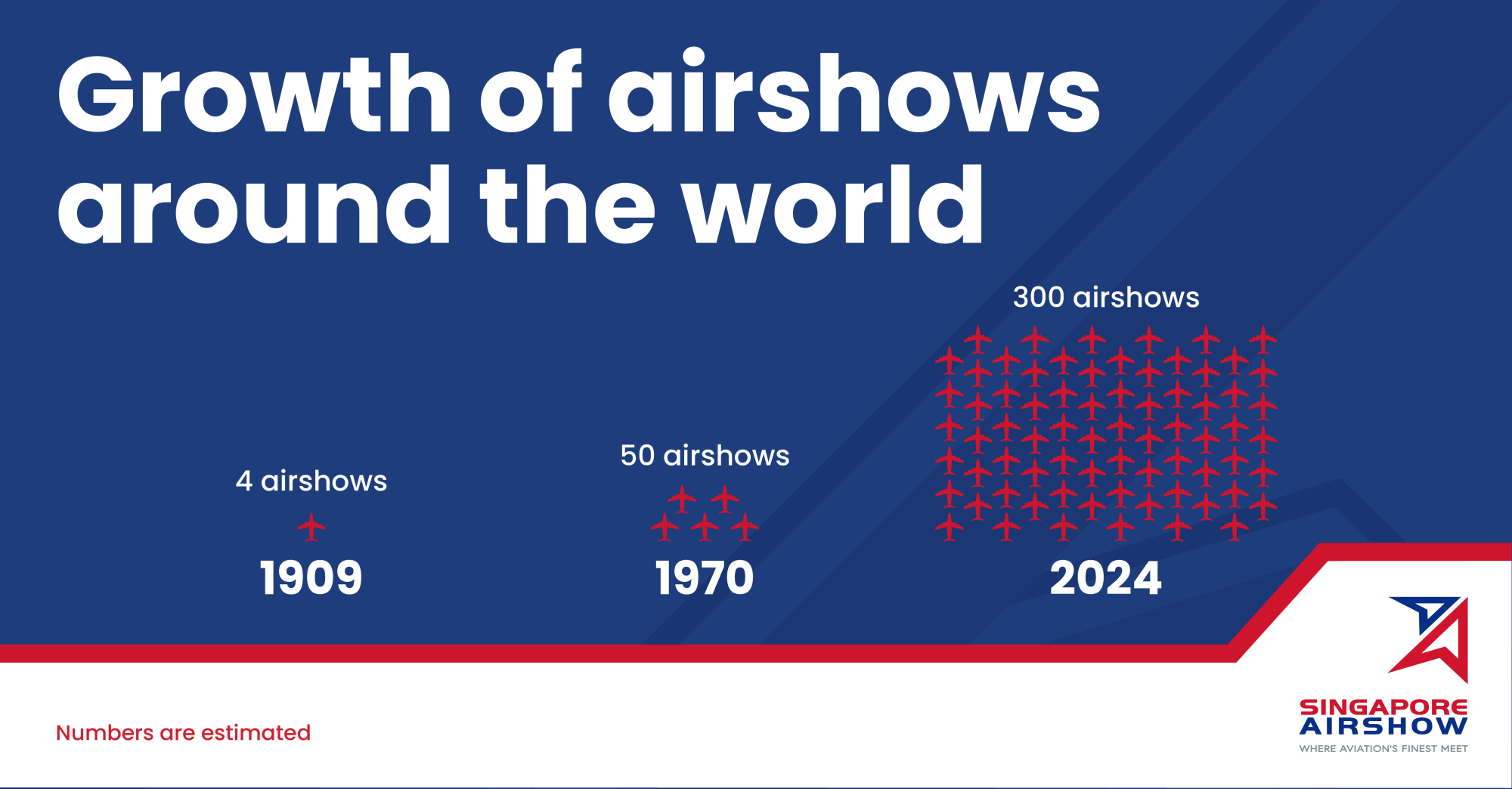
Programmes
AeroForum
Home >
Top Reads >
Runway for the Future of Aviation
Runway for the Future of Aviation
The Airshow Must Go On
SHOW NEWS | 25 July 2024
The late 19th and early 20th centuries saw this dream begin to materialise. The “Glider King” Otto Lilienthal conducted over 2,000 flights in various glider designs, with each experiment uncovering new principles around flight and aerodynamics. In 1903, brothers Orville and Wilbur Wright made history with the first powered flight to cover six kilometres, transforming aviation from fantasy to reality.
Exemplar of Human Achievement
From then on, flight became a spectacle to behold. Brazilian aviation pioneer Alberto Santos-Dumont's public demonstrations of flying powered, heavier-than-air machines from 1906 onwards were a soaring success in Europe, raising widespread interest and enthusiasm for aviation. French aviator Louis Blériot proved to the public the practicality of powered flight by travelling 36 kilometres across the English Channel in 1909, capturing the imagination of audiences on the potential of flight.
As aviation took off, humankind was propelled into a world of endless possibilities, one in which borders seemed to no longer matter, and the sky was literally the limit.
Celebrating Take Offs through Airshows
With much to celebrate and showcase, airshows took shape starting in 1909. The Internationale Luftschiffahrt-Ausstellung, now known as ILA Berlin, showcased a breadth of aviation marvels. Leading aviators were brought together at the Grande Semaine d'Aviation de la Champagne in France, including the likes of Glenn Curtiss who won the Gordon Bennett Trophy at the event for the fastest flight. Thousands gathered to witness aerial spectacles and the latest technological advancements, fostering a spirit of competition and innovation. Soon, airshows started sprouting up across Europe and North America to present barnstorming performances, daring stunts and jaw-dropping manoeuvres.

Propelling a Business Imperative
Beyond displaying the latest military and civilian aviation, airshows became important venues for the industry to network, show their latest innovations, and make business deals. The Farnborough International Airshow welcomed the world’s first commercial jet liner, the de Havilland DH.106 Comet, while the Paris Air Show featured the Boeing 747 jet airliner in 1969, the largest aeroplane at the time. These events also saw the debuts of industry firsts like the Lockheed Martin F-35 Lightning II and the Airbus A380. In no time, airshows became a key event for industry players competing to shine at the forefront of aviation.
Driving Economies and Hence, Societies Forward
Driving Economies and Hence, Societies Forward
Today, the aviation industry contributes significantly to regional and local economies. Nowhere is that more evident than in markets that host these events. Europe – which hosts both the Farnborough International Airshow as well as the Paris Air Show and ILA Berlin – boasts an aviation market that is estimated to be USD 67.81 billion in 2024 and is expected to reach USD 78.53 billion by 2029. Of this, a sizeable portion is from deals secured at airshows around the world.
Similarly, Asia Pacific, which is projected to account for 60% of the world’s GDP growth in 2024, is beginning to see the birth of new airshows. This includes the Bali International Airshow (to be held in September 2024), marking nearly three decades since Indonesia held an international airshow, as well as the Thailand International Air Show (to be held in 2027), a first for the country.
Over time, airshows have evolved to present a blend of tradition and innovation, combining historical aircraft displays with cutting-edge aviation technology. These shows not only celebrate aviation history but also serve as platforms for the industry to gather, share industry updates and developments, and close business deals.
Even as airshows change to suit the needs of the time, one constant remains: they bring together human ambition and the relentless pursuit of improvement and innovation. From the early days of aircraft stunt shows and displays to today's grand spectacles featuring the latest in aviation technology, airshows have always provided a platform for the industry’s best and brightest to gather and imagine what the skies of the future will look like, propelling the world, forward.
As we look to the future, the road ahead for airshows seems uncertain. With rapid advancements in technology, changing economic landscapes, and evolving public interests – what will it take for airshows to stay relevant in an ever-changing world? Stay tuned to find out more.